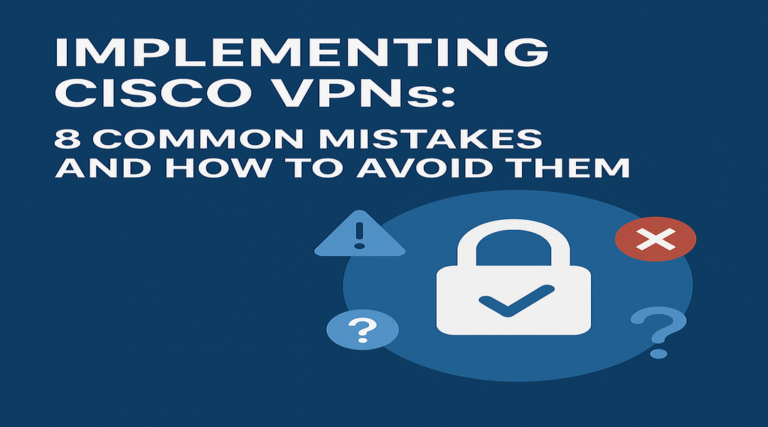Network Security: 6 Tools Experts Use to Prevent Breaches
In today’s hyper-connected digital landscape, the security of your network infrastructure has never been more critical. With cyberattacks increasing in both frequency and sophistication, organizations face unprecedented challenges in protecting their digital assets. According to recent data from IBM’s Cost of a Data Breach Report, the average cost of a data breach reached $4.45 million in 2023, a 15% increase over the past three years. Perhaps even more alarming, a successful network breach now takes organizations an average of 277 days to identify and contain.
These statistics highlight why network security isn’t just an IT concern—it’s a fundamental business imperative. From small businesses to large enterprises, healthcare providers to financial institutions, no organization is immune to the persistent threats that lurk in the digital shadows. Ransomware attacks, data breaches, and advanced persistent threats (APTs) continue to evolve, bypassing traditional security measures with alarming efficiency.
The good news? Implementing robust network security doesn’t have to be overwhelming. With the right tools, strategies, and knowledge, your organization can significantly reduce its vulnerability landscape and protect your most valuable digital assets. In this comprehensive guide, we’ll explore the essential tools security experts rely on to prevent network breaches and maintain a strong security posture in an increasingly hostile digital environment.
Table of Contents
What is Network Security?
Network security encompasses the policies, practices, and tools designed to protect the integrity, confidentiality, and accessibility of computer networks and the data they contain. Think of network security as the digital equivalent of a sophisticated home security system—it includes multiple layers of defenses at the network perimeter and within the network itself, actively monitoring for suspicious activities while preventing unauthorized access.
At its core, network security focuses on three fundamental principles: protecting digital assets from theft or damage, ensuring data privacy through controlled access, and maintaining business continuity by preventing service disruptions. Whether you’re protecting customer information, intellectual property, or operational systems, effective network security provides the foundation for digital trust and operational reliability in our connected world.
Why You Need Network Security
Protection Against Cyber Threats
Today’s threat landscape is vast and constantly evolving. Without robust network security, your organization becomes vulnerable to a wide range of attacks. Malware infections can corrupt systems and steal sensitive information. Phishing campaigns target your employees with increasingly sophisticated social engineering tactics. DDoS attacks can overwhelm your servers and bring operations to a standstill. According to the Cybersecurity and Infrastructure Security Agency (CISA), ransomware attacks alone affected over 72% of organizations in the past year, with an average downtime of 21 days per incident.
The consequences of these attacks extend far beyond immediate disruption—they can permanently damage your brand reputation, erode customer trust, and even threaten your organization’s survival.
Financial and Data Security Benefits
The financial implications of neglecting network security are staggering. Beyond the direct costs of incident response, system recovery, and potential ransom payments, organizations face regulatory fines, legal liabilities, and lost business opportunities. The Ponemon Institute estimates that for every dollar invested in network security, organizations save an average of $2.50 in potential breach-related expenses.
More importantly, robust network security protects your most valuable asset: data. Whether it’s proprietary business information, customer records, financial data, or intellectual property, comprehensive security measures ensure this information remains confidential, accurate, and available only to authorized users.
Compliance with Security Regulations
Nearly every industry faces growing regulatory requirements regarding data protection. From GDPR in Europe to HIPAA for healthcare providers, GLBA for financial institutions, and CCPA for businesses operating in California, compliance with these regulations isn’t optional. Network security solutions don’t just protect your organization—they provide the technical controls necessary to demonstrate compliance with these complex regulatory frameworks.
Failure to comply can result in severe penalties—GDPR violations alone can cost up to 4% of global annual revenue or €20 million, whichever is higher. Beyond fines, non-compliance can trigger mandatory audits, operational restrictions, and damage to your company’s reputation.
How to Implement Network Security
Quick Overview
Building a resilient network security infrastructure requires a multi-layered approach combining various tools, technologies, and practices. At its foundation, organizations need properly configured firewalls controlling traffic flow, strong encryption protecting data in transit and at rest, and robust authentication protocols verifying user identities. This security framework must be continuously reinforced through regular software updates, comprehensive monitoring solutions, and ongoing security awareness training for all employees.
The most effective network security implementations follow the “defense in depth” philosophy, creating multiple security layers so that if one protection mechanism fails, others remain in place to shield critical assets from compromise.
Key Components of Network Security
1. Firewalls
Firewalls serve as the first line of defense for your network, acting as a barrier between your trusted internal network and untrusted external networks. They monitor incoming and outgoing network traffic based on predetermined security rules, blocking or allowing connections accordingly.
Modern firewalls have evolved beyond simple packet filtering to include:
- Next-Generation Firewalls (NGFWs) with deep packet inspection capabilities
- Application-aware filtering to control traffic based on specific applications
- Integrated intrusion prevention systems (IPS)
- Web filtering and anti-malware scanning
Solutions like Cisco Firewall and Barracuda Firewall offer comprehensive protection suitable for organizations of all sizes, from small businesses to enterprise environments.
2. Intrusion Detection and Prevention Systems (IDPS)
While firewalls control access points, Intrusion Detection Systems (IDS) and Intrusion Prevention Systems (IPS) monitor network traffic for suspicious activities and known attack patterns. These sophisticated systems analyze network packets for malicious signatures or anomalous behaviors that might indicate an attempted breach.
An IDS alerts security teams when potential threats are detected, while an IPS takes this a step further by automatically blocking suspicious traffic. These systems provide critical visibility into network activities and serve as an essential layer in any comprehensive security strategy.
3. Virtual Private Networks (VPNs)
VPNs create encrypted tunnels for secure data transmission across public networks. In today’s remote work environment, VPNs have become increasingly vital for protecting sensitive information when employees connect from home networks, public Wi-Fi, or mobile devices.
Enterprise VPN solutions offer:
- End-to-end encryption of all transmitted data
- Authentication to verify legitimate users
- Access controls limiting network resource availability based on user roles
- Audit logs tracking connection activities for compliance and security monitoring
4. Endpoint Security Solutions
With the proliferation of devices connecting to corporate networks, endpoint security has become a critical component of network security. Comprehensive endpoint protection platforms safeguard individual devices—including computers, laptops, tablets, and smartphones—from malware, unauthorized access, and data leakage.
Advanced endpoint security solutions include:
- Anti-malware protection with behavioral analysis
- Host-based firewalls and intrusion prevention
- Device control capabilities restricting USB and peripheral usage
- Data loss prevention features
- Endpoint detection and response (EDR) for advanced threat hunting
5. Multi-Factor Authentication (MFA)
Password vulnerabilities remain among the most common entry points for attackers. Multi-Factor Authentication addresses this weakness by requiring users to provide two or more verification factors to gain access to resources, typically combining:
- Something you know (password/PIN)
- Something you have (hardware token, smartphone app)
- Something you are (biometric verification)
Implementation of MFA can reduce account compromise risk by over 99% according to Microsoft security research, making it one of the most cost-effective security controls organizations can deploy.
6. Security Information and Event Management (SIEM)
SIEM solutions aggregate and analyze security data from multiple sources across your network, providing a centralized view of your security posture. These powerful platforms collect logs from firewalls, servers, network devices, and applications, correlating events to identify potential security incidents that might otherwise go unnoticed.
Modern SIEM platforms leverage artificial intelligence and machine learning to detect subtle patterns indicating security threats, automatically prioritize alerts based on risk level, and provide actionable intelligence for security teams to investigate.
Step-by-Step Guide to Strengthening Network Security
1. Conduct a Comprehensive Security Assessment
Begin by identifying your organization’s most valuable digital assets and conducting a thorough vulnerability assessment. This process should:
- Document your current network infrastructure and security controls
- Identify security gaps and vulnerabilities in systems and applications
- Evaluate the effectiveness of existing security policies and procedures
- Prioritize risks based on potential impact and likelihood
Several network penetration testing tools and services can help identify vulnerabilities before attackers do, providing valuable insights for remediation efforts.
2. Implement and Configure Core Security Tools
Based on your assessment findings, deploy essential security technologies:
- Install perimeter firewalls with properly configured rule sets
- Deploy intrusion detection and prevention systems at critical network points
- Implement endpoint protection across all devices
- Configure secure authentication mechanisms, including MFA where appropriate
- Enable encryption for sensitive data, both in transit and at rest
For small businesses with limited resources, consider unified threat management (UTM) solutions that combine multiple security functions in a single appliance.
3. Establish Security Monitoring and Response Capabilities
Continuous monitoring is essential for early threat detection:
- Deploy a SIEM solution to aggregate security logs and events
- Establish 24/7 monitoring procedures (through internal staff or managed security services)
- Create incident response playbooks detailing actions for specific security scenarios
- Test response capabilities through tabletop exercises and simulations
4. Develop and Enforce Security Policies
Technical controls must be supported by comprehensive policies:
- Create detailed acceptable use policies for network resources
- Establish access control policies following the principle of least privilege
- Implement formal change management procedures
- Develop data classification and handling guidelines
- Document backup and recovery processes
5. Train and Educate Employees
People remain the most critical factor in security success:
- Conduct regular security awareness training for all staff
- Implement phishing simulation exercises to test employee vigilance
- Provide role-specific security training for IT personnel
- Create clear procedures for reporting suspected security incidents
What to Combine Network Security With
For maximum effectiveness, network security should be integrated with complementary security measures:
Cloud Security Solutions
As organizations migrate resources to cloud environments, traditional network boundaries become less relevant. Cloud security solutions extend network security principles to protect cloud-hosted applications, data, and infrastructure. Leading providers offer specialized tools for securing multi-cloud environments, managing identity across platforms, and ensuring consistent security controls regardless of where data resides.
Zero Trust Architecture
The zero trust security model operates on the principle of “never trust, always verify.” This approach eliminates the concept of trusted internal networks, instead requiring strict verification for every user and device attempting to access resources, regardless of location. Implementing zero trust principles dramatically reduces your attack surface by limiting lateral movement within your network and minimizing the impact of potential breaches.
AI-Powered Threat Detection Systems
Artificial intelligence and machine learning technologies are transforming network security monitoring. These systems analyze vast amounts of network telemetry data to establish behavioral baselines and detect subtle anomalies that might indicate compromise. AI-powered solutions can identify previously unknown threats (zero-day attacks) that signature-based systems would miss, providing an essential capability in today’s rapidly evolving threat landscape.
Network Security Monitoring Tools
Dedicated network security monitoring solutions provide continuous visibility into network traffic patterns, user behaviors, and system activities. These tools complement SIEM platforms by focusing specifically on network communications, analyzing packet data for suspicious patterns, and providing early warning of potential compromise attempts or policy violations.
Top Tips for Strengthening Network Security
1. Implement Defense in Depth
Never rely on a single security control. Deploy multiple layers of protection so that if one fails, others remain operational. This strategy significantly increases the difficulty and cost for attackers attempting to breach your network.
2. Segment Your Network
Network segmentation divides your infrastructure into isolated zones, containing potential breaches and limiting lateral movement. Critical systems and sensitive data should reside in separate network segments with tightly controlled access between zones.
3. Regularly Test Your Defenses
Schedule periodic vulnerability assessments and penetration tests to identify weaknesses before attackers do. Consider both external and internal testing perspectives, as threats can originate from either direction.
4. Maintain a Rigorous Patching Program
Unpatched vulnerabilities remain among the most common attack vectors. Establish a systematic approach to identifying, testing, and deploying security updates across all systems and applications.
5. Encrypt Sensitive Data
Implement strong encryption for data both in transit and at rest. This ensures that even if attackers gain access to your systems, they cannot read or use the information without the encryption keys.
6. Implement Proper Access Controls
Follow the principle of least privilege, granting users only the minimum access necessary to perform their job functions. Regularly review user permissions and remove unnecessary access rights promptly.
Storing and Managing Security Logs
Effective logging and monitoring are fundamental to network security success. Security logs provide the evidence needed to detect, investigate, and respond to security incidents. Best practices include:
- Centralize log collection from all network devices, servers, and security tools in a secure, tamper-resistant repository
- Establish log retention policies based on both compliance requirements and operational needs
- Implement automated log analysis to identify suspicious patterns and potential security events
- Create alerts for critical security events requiring immediate investigation
- Regularly review logs to identify trends, potential vulnerabilities, and opportunities for security improvement
Modern SIEM platforms automate many of these functions, correlating events across multiple sources to provide context and prioritization for security teams. When properly implemented, these systems transform raw log data into actionable security intelligence, dramatically improving detection and response capabilities.
FAQ About Network Security
What firewall is best for small business?
For small businesses, unified threat management (UTM) firewalls offer the best value by combining multiple security functions in one device. Solutions like Sophos XG, Fortinet FortiGate, and Barracuda Firewall provide enterprise-grade protection at small business price points, with simplified management interfaces ideal for environments without dedicated security staff.
How does a Barracuda firewall differ from other solutions?
Barracuda firewalls specialize in providing comprehensive security with simplified management. They offer strong protection against advanced threats through integrated functionality including URL filtering, intrusion prevention, and advanced malware protection. Their cloud-based management makes them particularly suitable for organizations with limited IT resources or distributed locations requiring centralized control.
What falls under network information security?
Network information security encompasses all measures protecting data confidentiality, integrity, and availability across a network infrastructure. This includes technical controls like firewalls and encryption, administrative controls like security policies and training, and physical controls securing network hardware and facilities. It addresses both the technology and human factors affecting information security within networked environments.
How do I choose between network security companies?
When evaluating network security companies, consider their expertise in your specific industry vertical, their technical certifications and partnerships, service level agreements, and transparency regarding incident management. Request customer references from organizations similar to yours, and evaluate their response time and quality during the sales process as indicators of future support experiences.
What is involved in network penetration testing?
Network penetration testing involves authorized simulated attacks against your network infrastructure to identify exploitable vulnerabilities. The process typically includes reconnaissance gathering information about your network, vulnerability scanning to identify potential weaknesses, exploitation attempts to confirm vulnerabilities, and post-exploitation activities testing the potential impact of successful breaches. A comprehensive report with remediation recommendations follows testing completion.
What tools are used for network security monitoring?
Network security monitoring utilizes specialized tools like network traffic analyzers (Wireshark, NetworkMiner), intrusion detection systems (Snort, Suricata), flow monitoring tools (Netflow, sFlow), and security information and event management platforms (Splunk, QRadar). These solutions collectively provide visibility into network communications, detect anomalies, and alert security teams to potential threats requiring investigation.
What are the advantages of Cisco firewall solutions?
Cisco firewalls offer unparalleled integration with existing network infrastructure, advanced threat protection capabilities, and centralized management across distributed environments. Their strength lies in comprehensive visibility across network traffic, application-aware security controls, and advanced malware protection. For organizations with existing Cisco infrastructure, their firewalls provide seamless integration and unified management, reducing operational complexity.
What should comprehensive network security solutions include?
Complete network security solutions should incorporate perimeter defense (firewalls, IPS), endpoint protection, access control mechanisms, data protection (encryption, DLP), vulnerability management, security monitoring, and incident response capabilities. They should address both external and internal threats while providing visibility, control, and protection across all network segments and connected devices.
How does cloud security network differ from traditional security?
Cloud security networks extend traditional protection models to dynamic, virtualized environments where perimeters are fluid and resources ephemeral. Key differences include shared responsibility models between providers and customers, API-driven security controls, distributed security architectures, and the need for consistent policy enforcement across hybrid environments. Cloud security requires specialized tools managing identity, data protection, and compliance across multiple platforms simultaneously.
How do cyber security and network security relate?
Network security represents a specialized subset of the broader cybersecurity discipline. While network security focuses specifically on protecting network infrastructure and data in transit, cybersecurity encompasses all digital assets including applications, data, endpoints, identity, and cloud resources. Strong network security provides the foundation for a comprehensive cybersecurity program, but must be complemented by other security domains for complete protection.
What is an intrusion detection system and how does it work?
An intrusion detection system (IDS) monitors network traffic for suspicious activity and policy violations. It analyzes network packets using signature-based detection comparing traffic against known attack patterns, anomaly-based detection identifying deviations from normal behavior, and protocol analysis ensuring communications follow expected standards. When threats are detected, an IDS generates alerts for security teams to investigate further.







